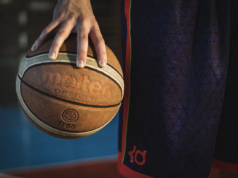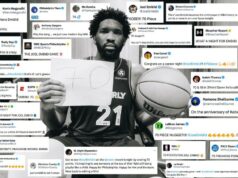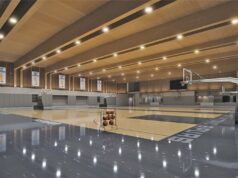Three seems to be a magic number in the NBA. It’s even more magical if you put the 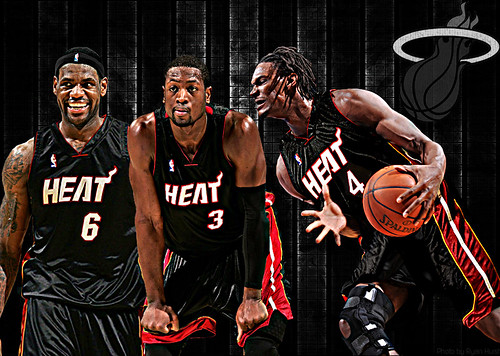 word “big” in front of it.
word “big” in front of it.
With LeBron James and Chris Bosh joining the Miami Heat with Dwayne Wade to complete the “Holy Trinity” of big threes and rumors of Chris Paul and Carmelo Anthony creating a big three in New York next season with Amar’e Stoudemire, it’s as if NBA General Managers discovered some fool-proof way to win championships as long as you have not one, but three superstars.
Even the Chicago Bulls solidified a big three lite this summer with the acquisition of Carlos Boozer to go along with Derrick Rose and Joakim Noah.
So whats the deal with all these “big three” and where did teams get the idea that a big three can deliver championships? To find the answer, look no further than the San Antonio Spurs. The team with the best “big three” of recent years.
For the past two decades, there hasn’t been a better trio like Tim Duncan, Manu Ginobili and Tony Parker. They have consistently kept the Spurs at the top of the NBA standings 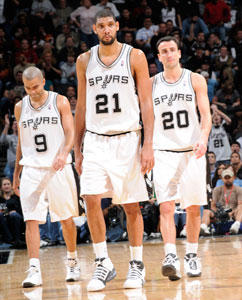 and because of them, every year is a possible title year. Sorry, but not even the Boston Celtics’ current three can compare to Duncan, Parker and Ginobili.
and because of them, every year is a possible title year. Sorry, but not even the Boston Celtics’ current three can compare to Duncan, Parker and Ginobili.
To even find a big three that compares to them we have to journey back to the decade of big hair and fast cars — the 80’s.
The 80’s. A magical decade in which we traveled through time with Micheal J. Fox and lived on a prayer with Bon Jovi. The 80’s is perhaps the golden age of basketball. Basketball fans witnessed the rise of Michael Jordan, the thunderous dunks of Dominique Wilkins, and the beautiful crossovers of Isiah Thomas. But 80’s basketball begins and ends with two things: the Celtics and the Los Angeles Lakers and each of their hall-of-fame three that set the standard for assembling three power players on one team.
Boston’s big three of Robert Parish, Kevin McHale and Larry Bird brought a big, tough, physical game to the court every night. Not only did McHale and Parish demand attention in the post, but both of them had tremendous passing abilities. Both were able to kick out of double teams flawlessly and find one of the greatest shooters of all time in Bird. Their inside-out game and stellar defense lead them to five finals appearances and three rings.
While the Spurs’ big three consist of different positions, both teams used their defense to win championships. Parish is ranked ninth on the all-time blocks list with Duncan right behind him at eleventh. Bird, like Ginobili, was a constant threat in the passing lanes. Both have career averages of nearly two steals per game. However, unlike the Spurs’ trio (all of whom were drafted by the organization) Parish was acquired in 1980 sending Boston’s number one overall pick to the Golden State Warriors for Parish and the third overall pick. The Celtics drafted McHale.
“Quick,” “flashy,” and “unpredictable,” are three words used to describe the high octane offense of the “Showtime” Los Angeles Lakers. Led by their big three of Magic Johnson,  Kareem Abdul Jabbar and James Worthy, the Lakers made six finals appearances and won three rings. Johnson has a total of five and Jabbar with six.
Kareem Abdul Jabbar and James Worthy, the Lakers made six finals appearances and won three rings. Johnson has a total of five and Jabbar with six.
Jabbar and Worthy were the perfect pieces to the puzzle that was the Lakers’ offense. Worthy played fast and was one of the best offensive players on the court without the ball. On the fast break, no one could stop the speed and grace of Worthy and Magic. But when things slowed down, as they often do come playoffs, Jabbar was without a doubt one of the best low post scorers to ever lace them up. Even in his later years, his patented sky hook was unstoppable.
Is there a better low post scorer in the game than Duncan? Pau Gasol? Bosh? Boozer? None of them can compare to Duncan and the way he uses his mind to break down his defenders. Like Jabbar at the end of his career, Duncan uses more of a cereberal game now then a physical one.
And who runs a fast break like Ginobili and Parker? Sure there are definitely some quicker players out there who can run the fast break to perfection, but Ginobili and Parker throw themselves into the basket like no other players in the game. In fact, I have an idea for a new drinking game, everytime Ginobili or Parker hits the floor from a fast break, take a shot. You’ll need a to call a taxi. Trust me.
But, unlike the Spurs’ three, the Lakers acquired Jabbar through a trade with the Milwaukee Bucks. Only Worthy and Johnson were drafted by Los Angeles.
Of the NBA’s current big threes, none can compare to what Duncan, Parker and Ginobili have accomplished in their seven seasons together. The Celtics’ three of Kevin Garnett, Ray Allen and Paul Peirce have been to two Finals, walking away with the NBA title once. Yet people still think they are the best big three in the league. Even better than Miami’s.
It seems the media and the public have forgot that deep in the heart of Texas, the real big three who won three NBA titles playing together, are still at the top of their games and should not be over looked. But what’s new? The Spurs are always over looked, but that’s how we like it.
There is another reason why the Spurs’ big three must be considered one of the greatest, if not the greatest, of all time. Each member of the big three were drafted by the Spurs. Not traded for or signed during free agency. The Spurs took a chance on two players no one had ever heard of and built them into the championship players they are now. The Spurs weren’t desperate and went out and grabbed two high-priced stars to team with Duncan. Instead, they scouted players and found two guys they knew could help the team.
Unlike the Heat, Bulls and Celtics, the Spurs drafted, molded and help build their three stars into all-world players. Each one of them will have their jerseys in the rafters of the AT&T Center. You think Boozer will retire his jersey with Chicago? No, not going to happen.
I understand it will take time for the big three in Miami to come together. But when Duncan, Parker and Ginobili came together for the first time in 2003, well, Spurs fans were celebrating in the streets of San Antonio as a second title came to the River City.
During this NBA off-season, some debate on which big three is better — Boston’s or Miami’s?
The answer to that question isn’t on the East coast. The answer to that question isn’t a team that spent millions of dollars on superstar players to come and sell jerseys and season tickets.
No, the answer to that question is located in a small south Texas city where people work hard and fight for the things they desire.
So while everyone is talking about Miami, Boston and Chicago, remember it’s the Spurs’ big three who have tasted the promise land, not once, not twice but thrice.


